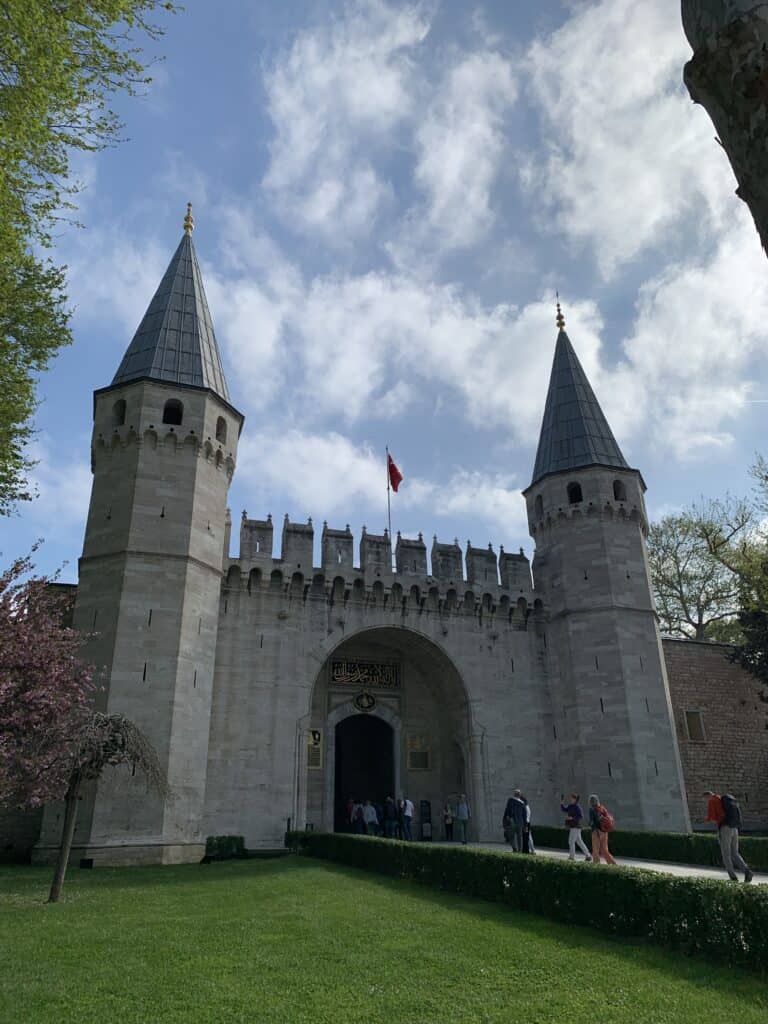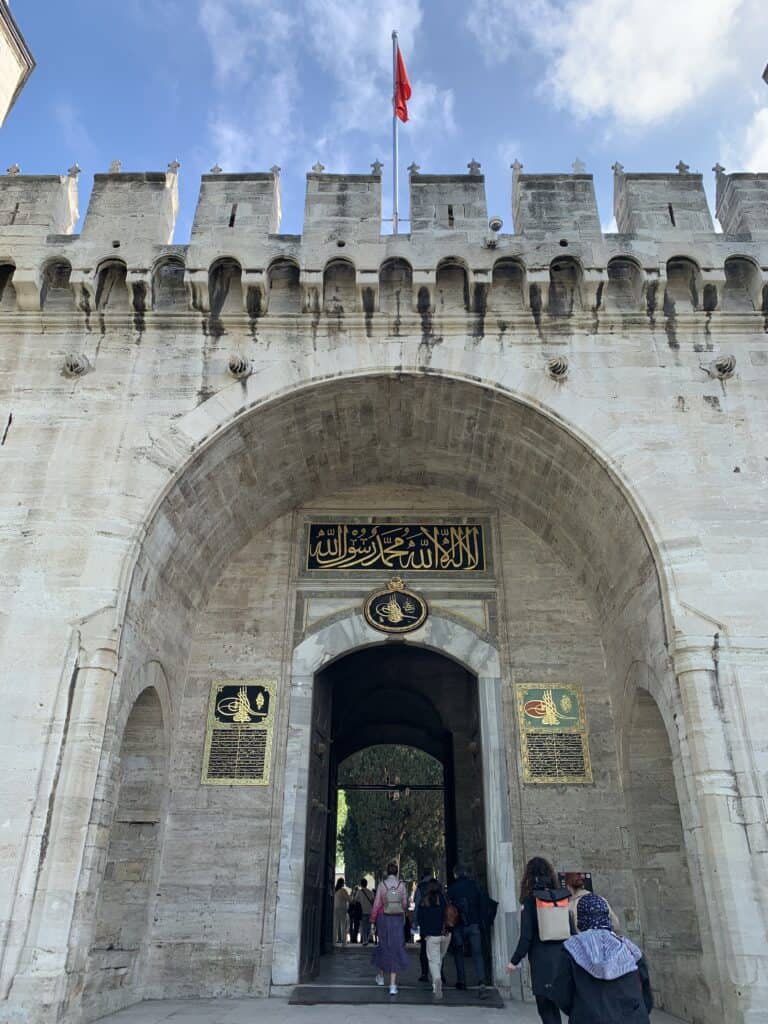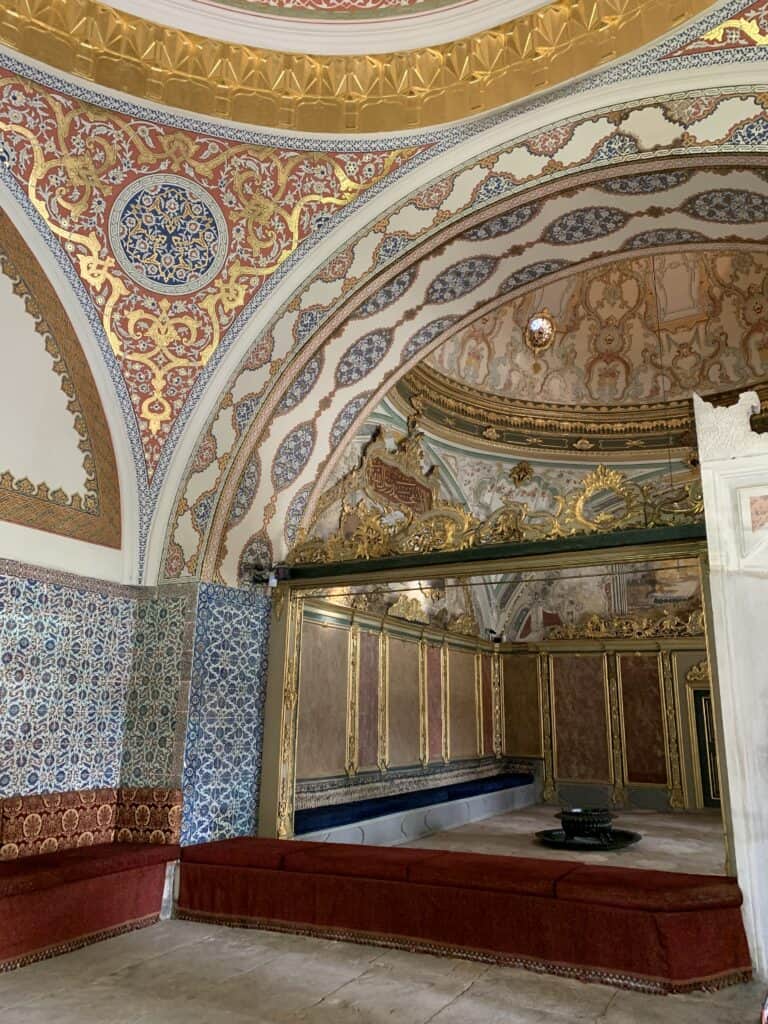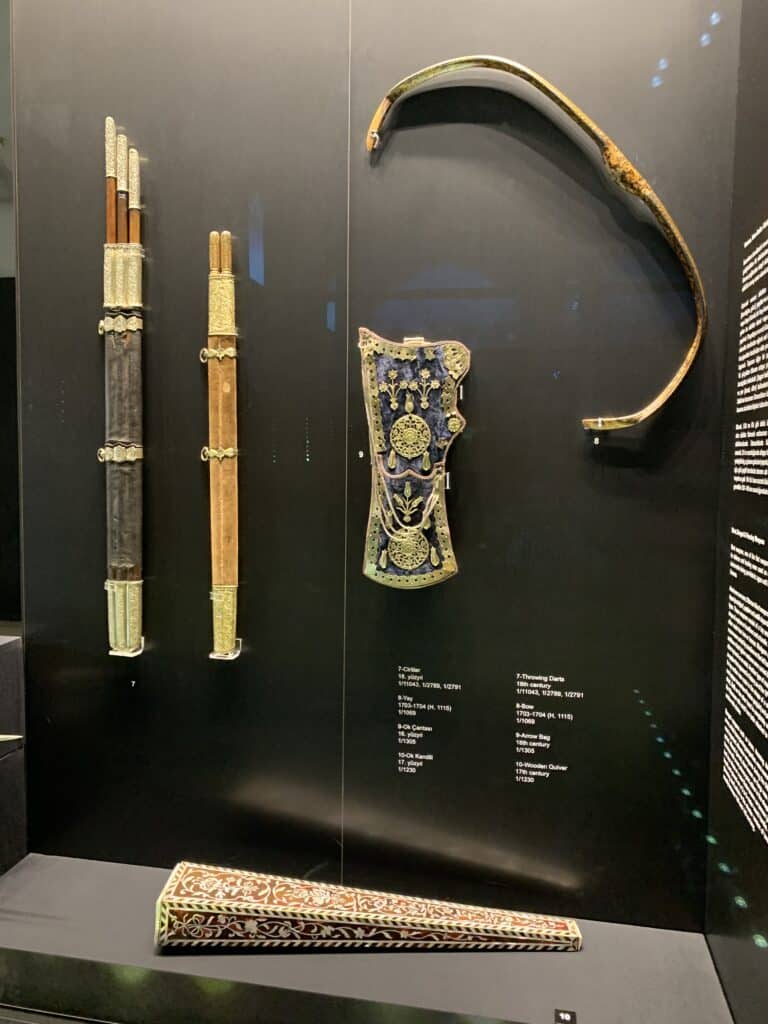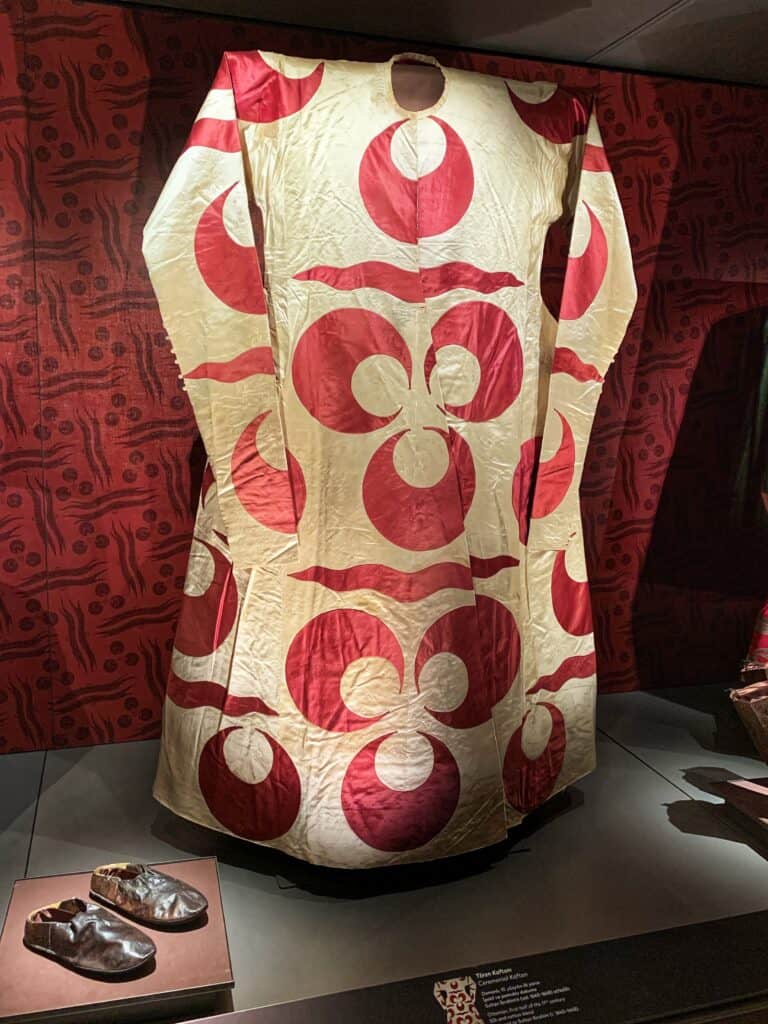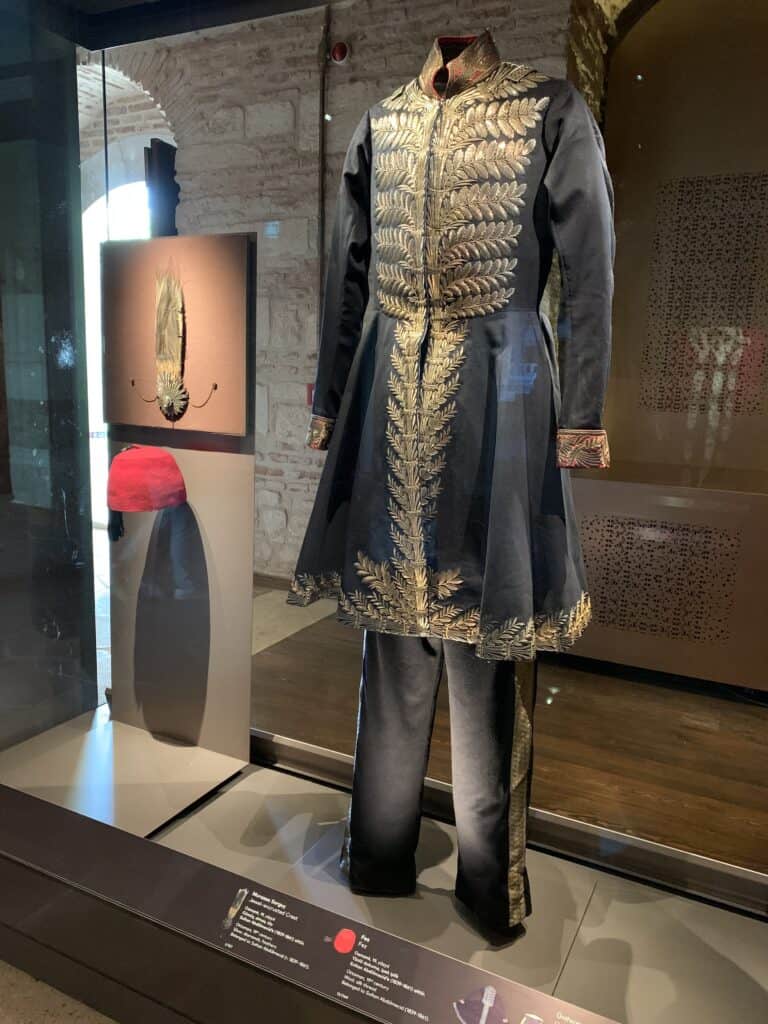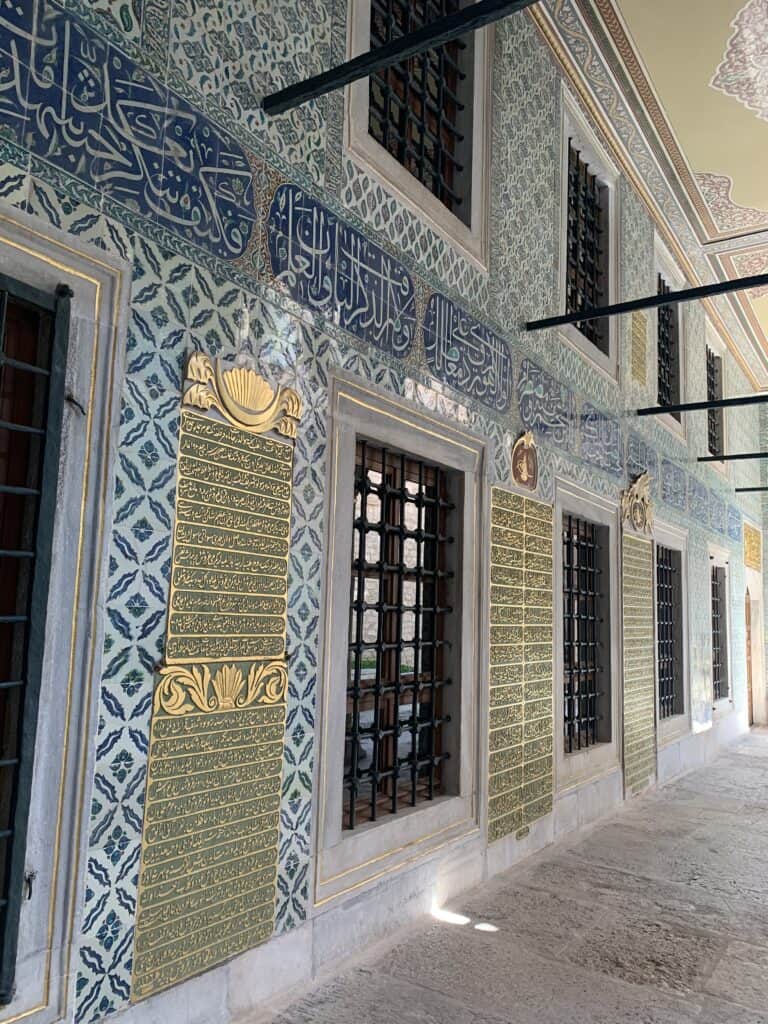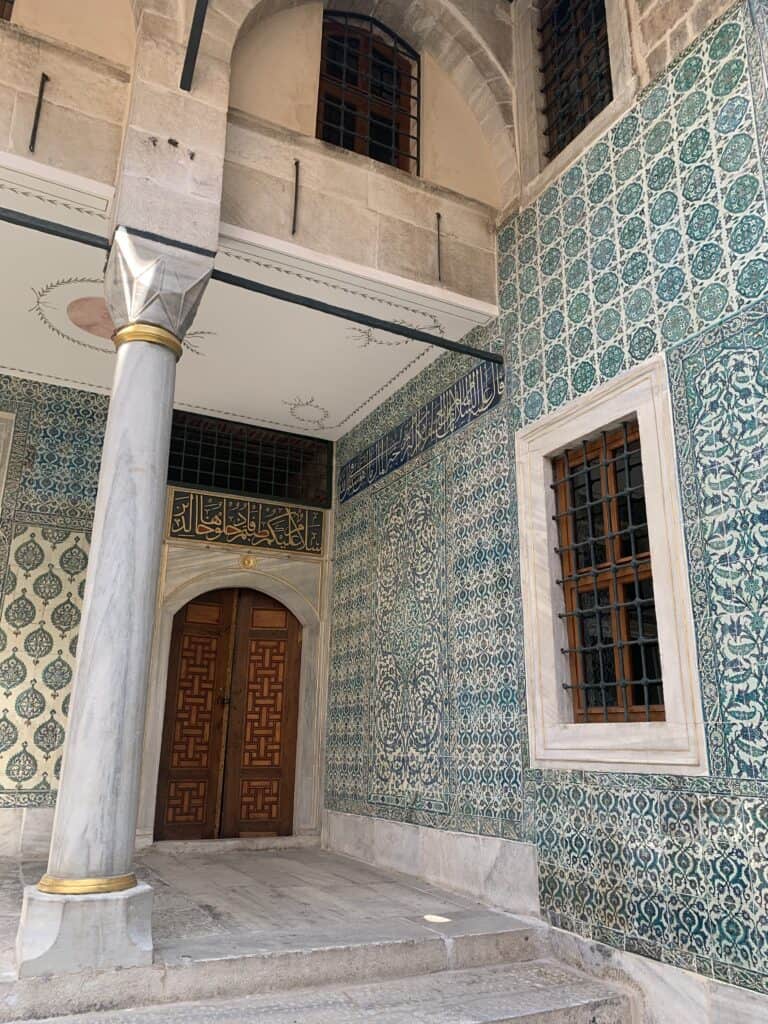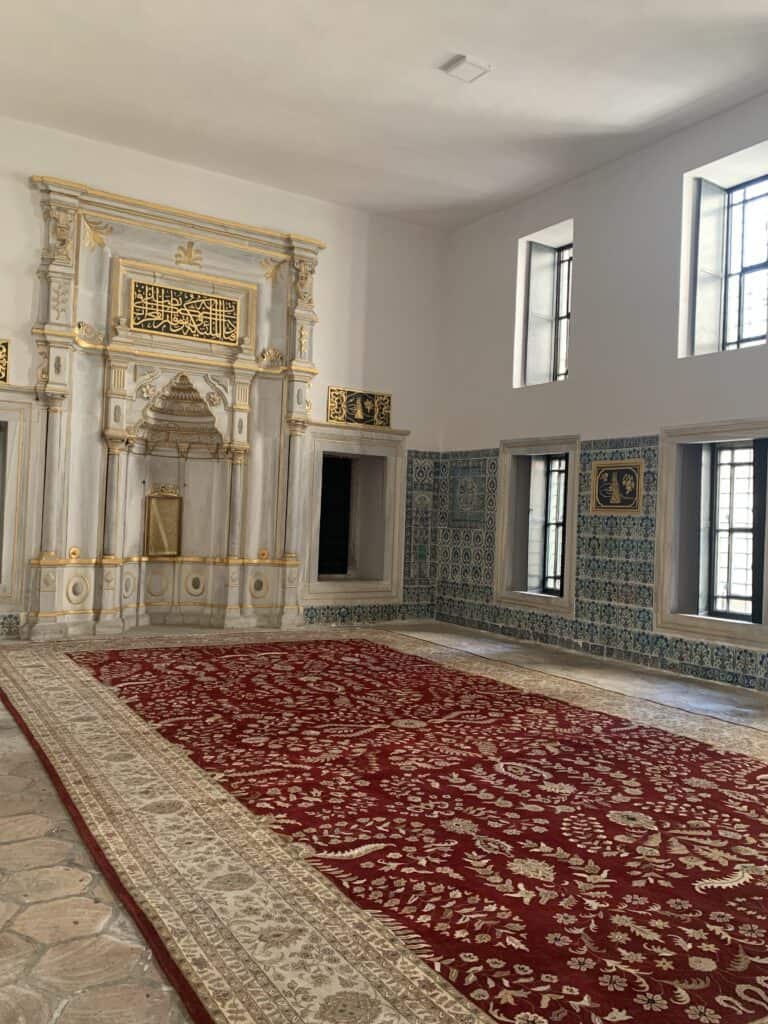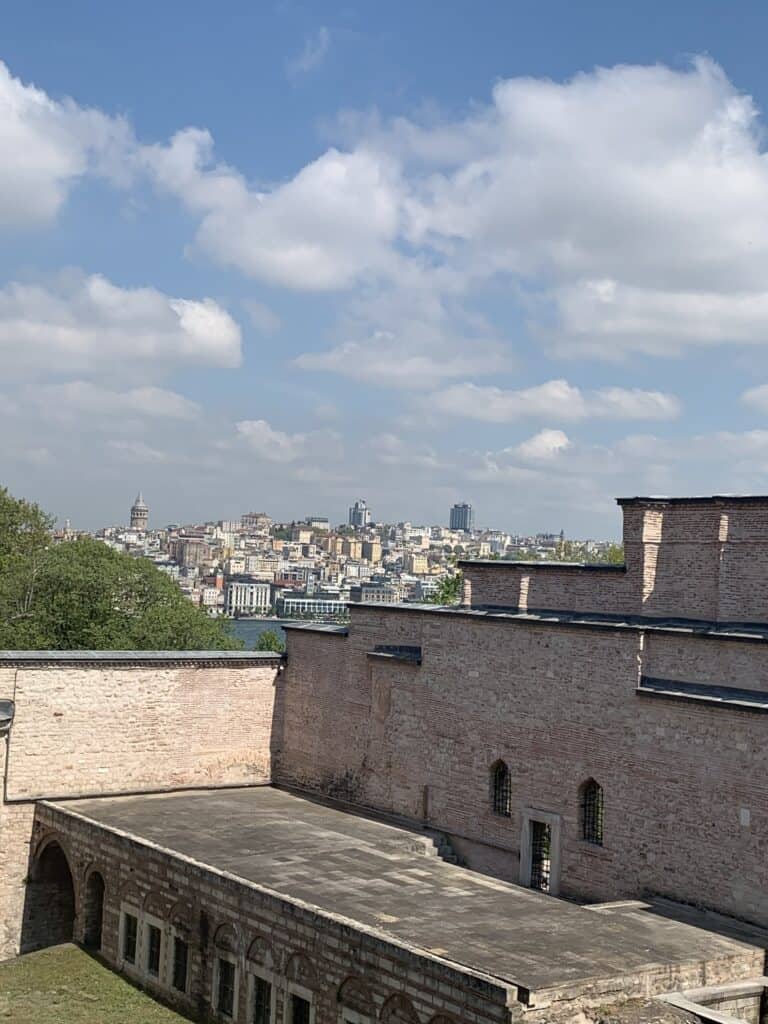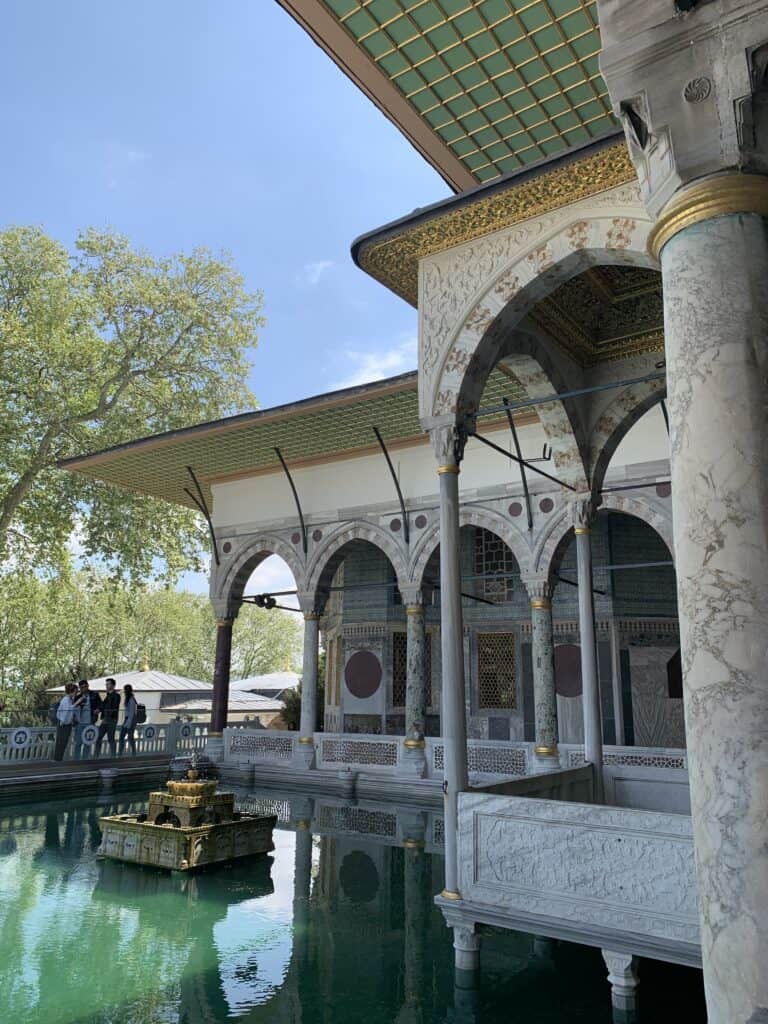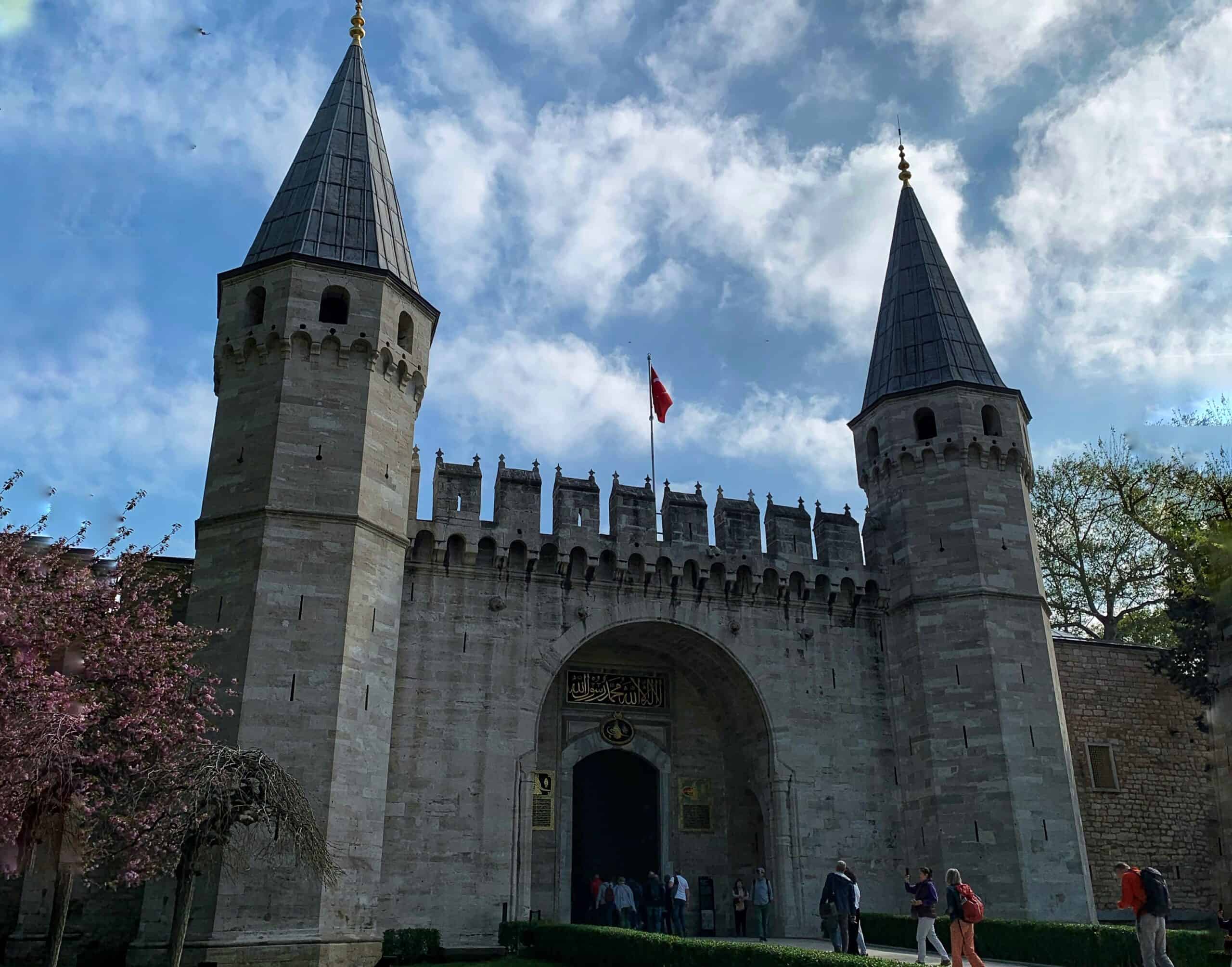
Topkapı Palace is the best reflection of the imperial era in Istanbul and symbolizes the power that reached Constantinople as seat of the Ottoman Empire. It is from this palace that the sultans ruled the Empire until the mid-19th century.
It was finished in 1478, twenty-five years after the capture of Constantinople by the armies of the Ottoman sultan Mehmet II.
In 1924 the Topkapı Palace was transformed into a museum.
The most important sections of Topkapı Palace are:
- The Court of the Janissaries and the fountain in which the Janissaries are said to have cleaned the swords of the blood of executions
- The Court of Ceremonies, where assemblies on state affairs were held, the gatherings of the people who expressed their discontent to the sultan and the payment of salaries to the Janissaries
- The majestic Harem made up of over 300 rooms which housed about a thousand women, the favorites of the sultan
- Ahmet III’s Library which housed six thousand volumes
- The pavilion of the relics
- The Treasury, where all the precious objects that belonged to the sovereigns are kept
- The BağdatKöşkü, an octagonal building surrounded by twenty-two columns and entirely covered with blue Iznik tiles.

